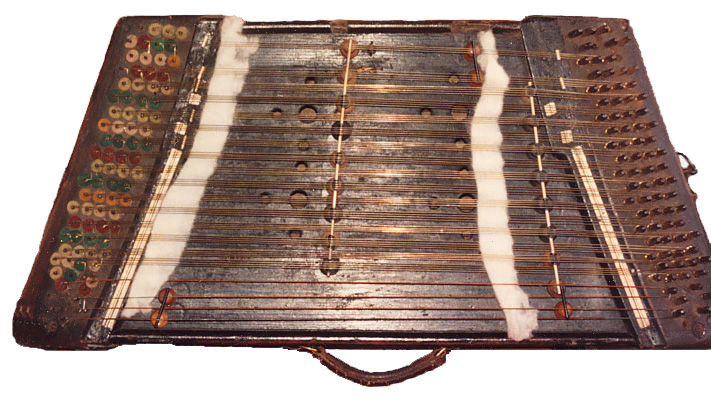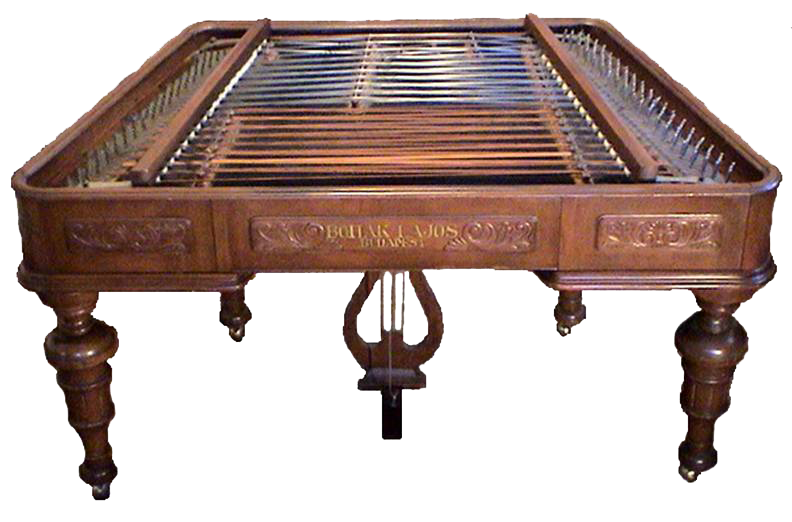My Instrument: the cimbalom
In English I refer to it by its Hungarian name, cimbalom. In Romanian it’s ţambal. Basically it’s a box strung with metallic strings that the player hits with two sticks―a dulcimer, in other words. The original, “Romanian” version is portable, with fewer strings, and I use a strap to hold it when in play. I used to play it this way in wedding processions and still do on occasion. It looks like this:
This one is about a hundred years old and used to belong to my grandfather. It is strung with approximately 64 brass and 4 wound strings. White felt is woven through the groups of wire strings to dampen the vibrations. The original tuning used by my father and grandfather and by me, when I first started to play, is different than what I use now. I tune this like the large cimbalom.
My main instrument is the large cimbalom or ţambal mare, which was made in Hungary. It has a much heavier frame, with steel supports inside, and many more strings than the small instrument. There are approximately 80 steel strings and 48 wound strings. A pedal operates the dampers.


